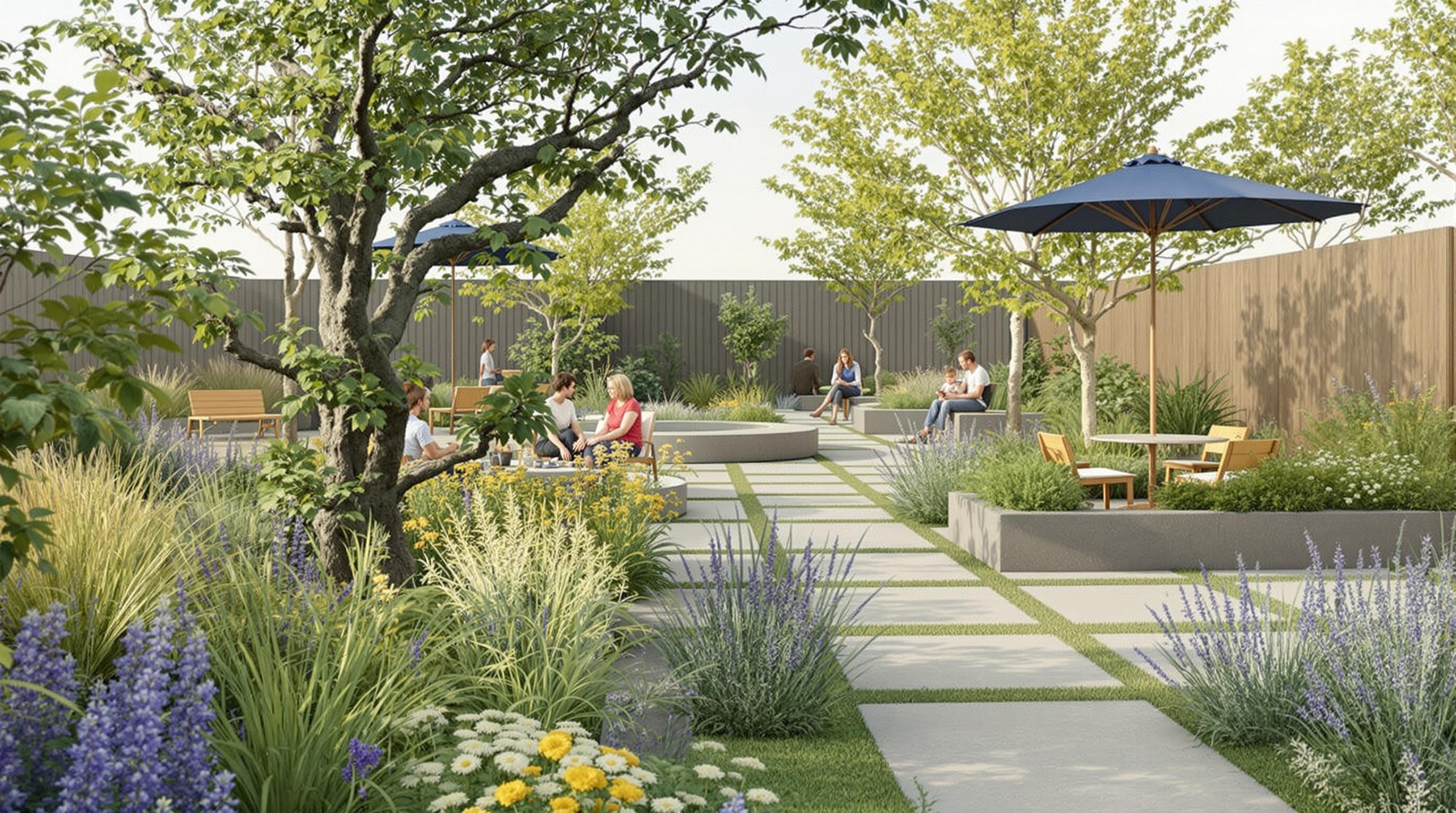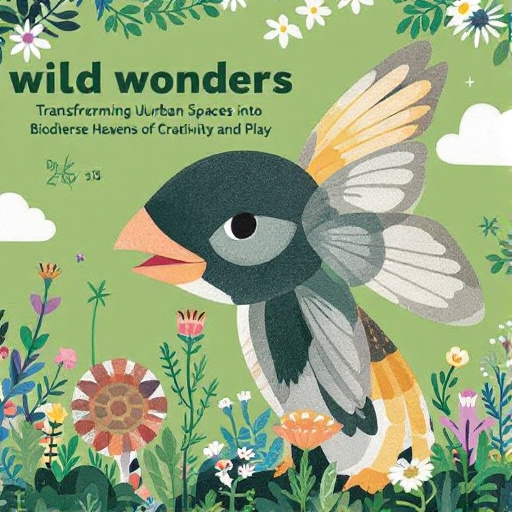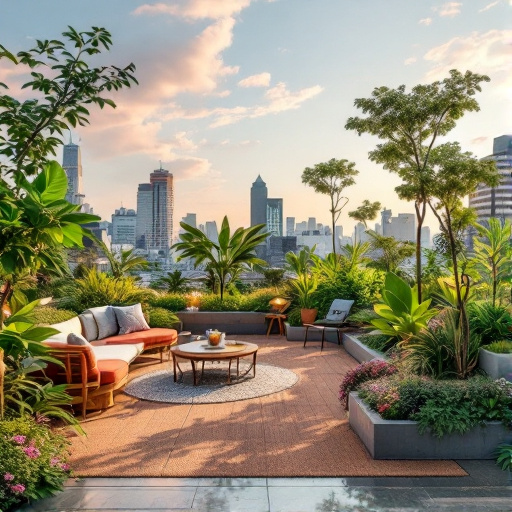Featured Articles
- 12 Innovative Strategies to Design Outdoor Spaces that Enhance Mental Wellness and Cognitive Function
- Blending Nature and Nostalgia: Designing Outdoor Spaces Inspired by Forgotten Childhood Playgrounds
- Rewilding Urban Landscapes: Transforming Concrete Jungles into Biodiverse Outdoor Sanctuaries
- Rewilding Urban Spaces: Designing Outdoor Retreats Through Nature's Chaotic Beauty
- Unconventional Outdoor Oasis: Transforming Urban Rooftops into Lush Green Retreats for Mindful Living
Rewilding Urban Spaces: Designing Outdoor Retreats Through Nature's Chaotic Beauty
Rewilding Urban Spaces: Designing Outdoor Retreats Through Nature's Chaotic Beauty
In an age where urban spaces are rapidly expanding, the call for rewilding provides a refreshing solution, transforming our concrete jungles into vibrant pockets of nature. By embracing nature's chaotic beauty, we can design outdoor retreats that not only enhance the aesthetic appeal of our cities but also improve mental health, biodiversity, and connectivity among communities.
Understanding Rewilding
Rewilding is a conservation approach aimed at restoring ecosystems to their natural, self-sustaining states. Although it often conjures images of vast landscapes filled with majestic wildlife, the urban concept of rewilding encourages the infusion of nature into our day-to-day environments.
Urban Planning Meets Nature
Picture this: a bustling city filled with relentless traffic and soaring buildings suddenly gives way to a vibrant pocket of wildflowers, native grasses, and towering trees, resembling a forgotten forest. That’s a glimpse into what rewilding urban spaces can achieve. According to a 2020 study published in the journal *Nature*, cities with increased greenery reported a 15% decrease in urban heat, which is a welcome relief in the heat-stricken summer months.
Statistics That Speak Volumes
Statistics reveal the critical benefits of integrating nature into urban areas. The World Health Organization (WHO) found that access to green spaces significantly boosts physical and mental health, leading to a 20% reduction in mood disorders and depression. Not to mention, urban greenery can improve air quality by removing an estimated 40% of pollutants from the atmosphere, making our cities healthier places to live.
The Beauty of Chaos
Forget pristine lawns and manicured flower beds; rewilding embraces the beauty of chaos. Natural landscapes are inherently diverse and often more resilient, showcasing a variety of plant species that attract pollinators, birds, and other wildlife. In urban areas, creating habitats that vary in structure—from wildflower meadows to vertical gardens—gives a sense of authenticity and spontaneity. Nature's chaotic beauty beckons serenity and sparks curiosity, inspiring people to slow down and reconnect with the world around them.
Bringing Stories to Life: Case Study Examples
Consider the extraordinary case of the High Line in New York City. Once an abandoned railway, it has transformed into a public park with an array of native plants, attracting over 8 million visitors annually. It's a perfect example of how rewilding can turn forgotten urban spaces into thriving community hubs.
Inspiration from Europe: The Transformation of Prizren
Another success story unfolds in Prizren, Kosovo. Here, an initiative called “Park of the Future” has embraced rewilding by allowing native flora to flourish in abandoned lots. Residents have noted a significant drop in urban temperatures, as well as a remarkable increase in local bird populations. In 2019 alone, local schools reported a 30% increase in student participation in nature-based educational programs—proving that rewilding initiatives not only beautify the landscape but also enrich educational experiences.
Community Engagement: The Heart of Rewilding
Rewilding urban spaces isn't merely a top-down initiative; it's a grassroots movement where community involvement is paramount. Local citizens who participate in rewilding projects often form a deeper connection with their surroundings, cultivating a sense of ownership and responsibility toward maintaining these new habitats.
Creating Outdoor Retreats
Imagine stepping into your neighborhood park, where children play under the shade of wild trees, while community members gather to attend a yoga class on a grassy hillside dotted with daisies. Spaces that embrace rewilding can serve as outdoor retreats where people of all ages can escape the hustle of their city lives. Incorporating elements like sensory gardens, meandering paths, and natural seating can create tranquil spaces that invite relaxation, socialization, and mindfulness.
The Adventure of Ecosystem Design
The process of creating these outdoor retreats often feels like a mad scientist's experiment—a mélange of trial and error, enthusiasm, and collaboration. Designers and community members can play with concepts, combining elements like natural landscapes, art installations, and water features. Perhaps a local artist could create a mural made from recycled materials, providing a splash of color against a backdrop of native plants. How about a “Perfumed Pathway” featuring fragrant herbs for passersby to brush against? The possibilities are as limitless as nature itself!
Cultivating a New Perspective
Rewilding is not merely an aesthetic movement but rather a call for a paradigm shift in how we perceive urban spaces. It encourages us to rethink our relationship with nature, moving beyond the feeling of being ‘in’ nature to becoming embedded ‘with’ it. A study from the University of Groningen found that participants who spent time in rewilded urban green spaces reported enhanced emotional well-being, clearer thinking, and even better sleep quality.
Contemplating Chaos: The Humor in Nature
Let's face it—nature has a quirky sense of humor! Witnessing a squirrel expertly stealing a birdseed while evoking jealousy in a nearby bird, or a patch of wildflowers blooming in the most unexpected cracks in the pavement reminds us that chaos can be a source of joy. Embracing these chaotic moments allows us to connect with the unpredictable beauty that nature offers.
Challenges of Rewilding Initiatives
While the vision of lush urban gardens and thriving ecosystems is enticing, there are challenges to consider. Urban bureaucracies, land-use policies, and budget constraints can hinder rewilding efforts. Public resistance can also arise from individuals who prefer the manicured aesthetic of traditional parks. As advocates of rewilding, we must be persuasive in communicating the considerable benefits—tangible and intangible—of fostering nature's chaos in our cities.
Conclusion: The Path Forward
As we descend further into urban life, rewilding our urban spaces offers a light at the end of the tunnel. It provides a way for communities to reconnect with nature, promotes ecological resilience, and fosters a collective commitment to preserving our planet’s beauty. So, the next time you stroll through your neighborhood, look closely at those wildflowers peeking through the cracks and remember: sometimes, chaos is the antidote we didn’t know we needed.
Let us embrace the messiness of nature in our urban designs, paving the way for flourishing ecosystems and vibrant communities. After all, in the grand tapestry of life, it's the wild threads that often hold the most beauty and strength. So, what are you waiting for? Start advocating for your own outdoor retreat and experience the magic that comes with rewilding urban spaces!




